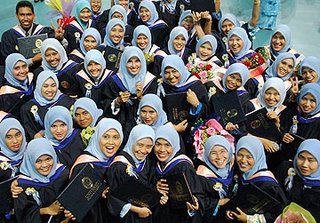The first task of this project was to establish operational definitions or criteria for positive youth development. Through a literature review, consultation with project officers, and a consensus meeting of the project advisory board, an operational definition of positive youth development was created. For the purposes of this review, positive youth development programs are approaches that seek to achieve one or more of the following objectives:
Promotes bonding
Fosters resilience
Promotes social competence
Promotes emotional competence
Promotes cognitive competence
Promotes behavioral competence
Promotes moral competence
Fosters self-determination
Fosters spirituality
Fosters self-efficacy
Fosters clear and positive identity
Fosters belief in the future
Provides recognition for positive behavior
Provides opportunities for prosocial involvement
Fosters prosocial norms.
Bonding is the emotional attachment and commitment a child makes to social relationships in the family, peer group, school, community, or culture. Child development studies frequently describe bonding and attachment processes as internal working models for how a child forms social connections with others (Ainsworth, et al. 1978; Bowlby, 1982, 1979, 1973; Mahler et al., 1975). The interactions between a child and a child's caregivers build the foundation for bonding which is key to the development of the child's capacity for motivated behavior. Positive bonding with an adult is crucial to the development of a capacity for adaptive responses to change, and growth into a healthy and functional adult. Good bonding establishes the child's trust in others and in self. Inadequate bonding establishes patterns of insecurity and self-doubt. Very poor bonding establishes a fundamental sense of mistrust in self and others, creating an emotional emptiness that the child may try to fill in other ways, possibly through drugs, impulsive acts, antisocial peer relations, or other problem behaviors (Braucht, Kirby & Berry, 1978; Brook, Brook, Gordon, Whiteman & Cohen, 1990; Brook, Lukoff & Whiteman, 1980; Elliott et al., 1985; Kandel, Kessler & Margulies, 1978).
The importance of bonding reaches far beyond the family. How a child establishes early bonds to caregivers will directly affect the manner in which the child later bonds to peers, school, the community, and culture(s). The quality of a child's bonds to these other domains are essential aspects of positive development into a healthy adult (Brophy, 1988; Brophy & Good, 1986; Dolan, Kellam & Brown, 1989; Hawkins, Catalano & Miller, 1992). Strategies to promote positive bonding combined with the development of skills have proven to be an effective intervention for adolescents at risk for antisocial behavior (Dryfoos, 1990; Caplan, Weissberg, Grober, Sivo, Grady & Jacoby, 1992).
Operational Definition. For this review, a program was classified as promoting bonding if one or more of its components focused on developing the child's relationship with a healthy adult, positive peers, school, community, or culture.
Fosters ResilienceResilience is an individual's capacity for adapting to change and stressful events in healthy and flexible ways. Resilience has been identified in research studies as a characteristic of youth who, when exposed to multiple risk factors, show successful responses to challenge, and use this learning to achieve successful outcomes (Rutter, 1985; Hawkins et al., 1992; Masten, Best & Garmezy, 1990; Werner, 1995, 1989). The National Academy of Sciences, National Research Council (1996: 4) defined resilience as "patterns that protect children from adopting problem behaviors in the face of risk." Rutter (1987a; 1985) described protective mechanisms associated with four main processes of resilience, including reduction of risk impact, reduction of negative behavior patterns, the establishment and maintenance of self esteem and self-efficacy, and the opening up of opportunities. Thornberry, Huizinga and Loeber (1995) suggested that resilience involves adaptive responses to such environmental stressors as changes in family or community circumstances.
Operational Definition. Programs were classified as fostering resilience if they emphasized strategies for adaptive coping responses to change and stress, and promoted psychological flexibility and capacity.
Promotes CompetenciesThe positive youth development construct of competence covers five areas of youth functioning, including social, emotional, cognitive, behavioral, and moral competencies. Programs are defined as promoting competence if they focus on building specific skills in these areas.
The multiple dimensions of competence began to be recognized in the past two decades (Gardner, 1993; Zigler & Berman, 1983). More recently, Weissberg & Greenberg (1997) urged that competence should be viewed and measured in research studies as a developmental outcome. While the enhancement of competence can help to prevent other negative outcomes (Botvin et al., 1995), competence can be specified and measured as an important outcome itself, indicative of positive development.
In recent years, many competence promotion efforts have sought to develop skills to integrate feelings (emotional competence) with thinking (cognitive competence) and actions (behavioral competence), in order to help the child achieve specific goals.
Social Competence. Social competence is the range of interpersonal skills that help youth integrate feelings, thinking, and actions in order to achieve specific social and interpersonal goals (Caplan et al., 1992; Weissberg, Caplan & Sivo, 1989). These skills include encoding relevant social cues; accurately interpreting those social cues; generating effective solutions to interpersonal problems; realistically anticipating consequences and potential obstacles to one's actions; and translating social decisions into effective behavior (Elias et al., 1994).
The benefits of social competence promotion programs were described by Caplan, et al., (1992:56):
Kornberg & Caplan (1980), who reviewed 650 papers on biopsychosocial risk factors and preventive interventions, concluded that competence training to promote adaptive behavior and mental health is one of the most significant developments in recent primary prevention research. In general, social competence promotion programs were designed to enhance personal and interpersonal effectiveness, and to prevent the development of maladaptive behavior through (a) teaching students developmentally appropriate skills and information, (b) fostering prosocial and health-enhancing values and beliefs, and (c) creating environmental supports to reinforce the real-life application of skills (Weissberg, Caplan & Sivo, 1989). Some researchers hypothesized that teaching students a general set of competencies that can be broadly applied to cope with diverse stressors is sufficient to prevent specific problem behaviors (e.g., Spivack & Shure, 1982). Recent research, however, indicates that skills are not automatically and consistently applied to every social task encountered (Caplan, Bennetto & Weissberg, 1991; Dodge, Pettit, McClaskey & Brown, 1986). To produce meaningful effects on specific target behaviors, it also appears necessary to include opportunities in SCP programs for students to practice and apply learned skills to specific, relevant social tasks (Hawkins & Weis, 1985). The combination of general social skills training with domain-specific instruction may be the most effective way to prevent particular psychosocial problems (Durlak, 1980).
Operational Definition. Programs were classified as promoting social competence if they provided training in developmentally appropriate interpersonal skills, and rehearsal strategies for practicing these skills. These skills included communication, assertiveness, refusal and resistance, conflict-resolution, and interpersonal negotiation strategies for use with peers and adults.
Emotional competence is the ability to identify and respond to feelings and emotional reactions in oneself and others. Salovey and Mayer (1990) identified five elements of emotional competence, including knowing one's emotions, managing emotions, motivating oneself, recognizing emotions in others, and handling relationships. The W.T. Grant Consortium on the School-Based Promotion of Social Competence (1992: 136), provided a list of emotional skills that are ingredients of many prevention programs: "Identifying and labeling feelings, expressing feelings, assessing the intensity of feelings, managing feelings, delaying gratification, controlling impulses, and reducing stress." Goleman (1995) proposed empathy and hope as components of emotional intelligence.
Operational Definition. Programs were classified as promoting emotional competence if they sought to develop youth skills for identifying feelings in self or others, skills for managing emotional reactions or impulses, or skills for building the youth's self-management strategies, empathy, self-soothing, or frustration tolerance.
Cognitive competence includes two overlapping but distinct sub-constructs. The W.T. Grant Consortium on the School-Based Promotion of Social Competence (1992: 136) defined the first form of cognitive competence as the "ability to develop and apply the cognitive skills of self-talk, the reading and interpretation of social cues, using steps for problem-solving and decision-making, understanding the perspective of others, understanding behavioral norms, a positive attitude toward life, and self awareness."
The second aspect of cognitive competence is related to academic and intellectual achievement. The emphasis here is on the development of core capacities including the ability to use logic, analytic thinking, and abstract reasoning. Many preventive interventions have focused on promoting this form of cognitive competence to prevent school failure (Berrueta-Clement, Schweinhart, Barnett, Epstein & Weikart, 1984; Horacek, Ramey, Campbell, Hoffman & Fletcher, 1987; Seitz, Rosenbaum & Apfel, 1985), and strengthen commitment to school (Gottfredson, 1988; Johnston, O'Malley & Bachman, 1985), because low academic achievement is a risk factor for many negative youth outcomes including substance abuse (Holmberg, 1985; Jessor, 1976; Robins, 1980) and violence (Tolan & Guerra, 1994).
Operational Definition. A program was classified as promoting cognitive competence if it sought to influence a child's cognitive abilities, processes, or outcomes, including academic performance, logical and analytic thinking, problem-solving, decision-making, planning, goal-setting, and self-talk skills.
Behavioral competence refers to effective action. The W.T. Grant Consortium on the School-Based Promotion of Social Competence (1992: 136), identified three dimensions of behavioral competence: "Nonverbal communication (through facial expressions, tone of voice, style of dress, gesture or eye contact), verbal communication (making clear requests, responding effectively to criticism, expressing feelings clearly), and taking action (helping others, walking away from negative situations, participating in positive activities)."
Operational Definition. Programs were classified as promoting behavioral competence if they taught skills and provided reinforcement for effective behavior choices and action patterns, including nonverbal and verbal strategies.
Moral competence is a youth's ability to assess and respond to the ethical, affective, or social justice dimensions of a situation. Piaget (1952, 1965) described moral maturity as both a respect for rules and a sense of social justice. Kohlberg (1963, 1969, 1981) defined moral development as a multi-stage process through which children acquire society's standards of right and wrong, focusing on choices made in facing moral dilemmas. Hoffman (1981) said that the roots of morality are in empathy, or empathic arousal, which has a neurological basis and can be either fostered or suppressed by environmental influences. He also asserted that empathic arousal eventually becomes an important mediator of altruism, a quality that many youth interventions try to promote in young people.
Operational Definition. A program was classified as promoting moral competence if it sought to promote empathy, respect for cultural or societal rules and standards, a sense of right and wrong, or a sense of moral or social justice.
Fosters Self-DeterminationSelf-determination is the ability to think for oneself, and to take action consistent with that thought. Fetterman et al. (1996) defined self-determination as the ability to chart one's own course. Much of the literature on self-determination has emerged from work with disabled youth (Brotherson et al., 1995; Field, 1996; Sands & Doll, 1996; Wehmeyer, 1996) and from cultural identity work with ethnic and minority populations (Snyder & Zoann, 1994; Swisher, 1996). While some writers expressed concern that self-determination may emphasize individual development at the expense of group-oriented values (Ewalt & Mokuau, 1995), others linked self-determination to innate psychological needs for competence, autonomy, and relatedness (Deci & Ryan, 1994).
Operational Definition. Programs were classified as promoting self-determination if their strategies sought to increase youths' capacity for empowerment, autonomy, independent thinking, or self-advocacy, or their ability to live and grow by self-determined internal standards and values (may or may not include group values).
Fosters SpiritualityA search of the literature across the various disciplines associated with positive youth development did not produce a definition of spirituality appropriate to this review. To capture components of either religiosity or non-traditional forms of applied spiritual practice, spirituality is defined here as "relating to, consisting of, or having the nature of spirit; concerned with or affecting the soul; of, from, or relating to God; of or belonging to a church or religion" (Webster's New College Dictionary, 1995). The construct of spirituality has been associated in some research with the development of a youth's moral reasoning, moral commitment, or a belief in the moral order (Hirschi, 1969; Stark & Bainbridge, 1997). Recent reviews of the relationship between religiosity and adolescent well-being found that religiosity was positively associated with prosocial values and behavior, and negatively related to suicide ideation and attempts, substance abuse, premature sexual involvement, and delinquency (Benson, 1992; Benson, Donahue & Erickson, 1990; Donahue & Benson, 1995). Several authors (Meyer & Lausell, 1996) recently argued for the value of including a "higher power" in violence prevention efforts, asserting that promoting an adolescent's understanding of his or her spiritual belief system will positively contribute to other aspects of the young person's development. Another author suggested that because adolescence is inherently a developmental stage characterized by the search for meaning, spiritual exploration should be supported through assisting youth in finding appropriate reading materials to address their questions (Mendt, 1996).
Operational Definition. Programs were classified as fostering spirituality if they promoted the development of beliefs in a higher power, internal reflection or meditation, or supported youth in exploring a spiritual belief system, or sense of spiritual identity, meaning, or practice.
Fosters Self-EfficacySelf-efficacy is the perception that one can achieve desired goals through one's own action. Bandura (e.g. 1989:1175) stated that "Self-efficacy beliefs function as an important set of proximal determinants of human motivation, affect, and action. They operate on action through motivational, cognitive, and affective intervening processes." Strategies associated with self-efficacy beliefs include personal goal setting, which is influenced by self-appraisal of one's capabilities (Bandura, 1993, 1986). Others have documented that the stronger the perceived self-efficacy, the higher the goals people set for themselves and the firmer their commitment to them (Locke, Frederick, Lee & Bobco, 1984). Prevention science studies showed that problem behaviors are mediated by cognitive, emotional, attitudinal, personality, and social factors including poor coping skills, anxiety, need for social approval, favorable attitudes toward use and a lack of self-efficacy (Hawkins, Lishner, Catalano & Howard, 1986; Holden, Moncher, Schinke & Barker, 1990).
Operational Definition. Programs were classified as fostering self-efficacy if their strategies included personal goal-setting, coping and mastery skills, or techniques to change negative self-efficacy expectancies or self-defeating cognitions.
Fosters Clear and Positive IdentityClear and positive identity is the internal organization of a coherent sense of self. The construct is associated with the theory of identity development emerging from studies of how children establish their identities across different social contexts, cultural groups, and genders. Identity is viewed as a "self-structure," an internal, self-constructed, dynamic organization of drives, abilities, beliefs, and individual history, which is shaped by the child's navigation of normal crises or challenges at each stage of development (Erikson, 1968). Erikson described overlapping yet distinct stages of psychosocial development that influence a child's sense of identity throughout life, but which are especially critical in the first 20 years. If the adolescent or young adult does not achieve a healthy identity, role confusion can result. Developmental theorists assert that successful identity achievement during adolescence depends on the child's successful resolution of earlier stages.
Identity formation is a complex process even under the best circumstances. (Douvan & Adelson, 1966; Offer & Offer, 1975; Waterman, 1985). Stages of identity development are linked to gender differences in pre-adolescence and adolescence, revealing a series of identity aspects for girls that are not parallel to those of boys (Gilligan, 1982). Investigations of the positive identity development of gay and bisexual youth have become a focus for some researchers (Johnston & Bell, 1995).
For youth of color, the development of positive identity and its role in healthy psychological functioning is closely linked with the development of ethnic identity (Mendelberg, 1986; Parham & Helms, 1985; Phinney, 1990, 1991; Phinney, Lochner & Murphy, 1990; Plummer, 1995), issues of bicultural identification (Phinney & Devich-Navarro, 1997), and bicultural or cross-cultural competence (LaFromboise, Coleman & Gerton, 1993; LaFromboise & Rowe, 1983). Some have suggested that it is healthy for ethnic minority youth to be consciously socialized to understand the multiple demands and expectations of both the majority and minority culture (Spencer, 1990; Spencer & Markstrom-Adams, 1990). This process may offer psychological protection through providing a sense of identity that captures the strengths of the ethnic culture, and helps buffer experiences of racism and other risk factors (Hill et al., 1994). This may also enhance prosocial bonding to adults who can help youths to counter potential interpersonal violence in their peer groups (Hill et al., 1994; Wilson, 1990).
Several studies have suggested a positive relationship between ethnic identity and social adjustment (Grossman, Wirt & Davids, 1985; Paul & Fisher, 1980; Tzuriel & Klein, 1977). Ethnic identity achievement includes self-identification as a group member, a sense of belonging, and positive attitudes toward one's group (Phinney, 1990).
Operational Definition. Programs were classified as fostering clear and positive identity if they sought to develop healthy identity formation and achievement in youth, including positive identification with a social or cultural sub-group that supports their healthy development of sense of self.
Fosters Belief in the FutureBelief in the future is the internalization of hope and optimism about possible outcomes. This construct is linked to studies on long-range goal setting, belief in higher education, and beliefs that support employment or work values. "Having a future gives a teenager reasons for trying and reasons for valuing his life" (Prothrow-Stith, 1991: 57). Research demonstrates that positive future expectations predict better social and emotional adjustment in school, and a stronger internal locus of control, while acting as a protective factor in reducing the negative effects of high stress on self-rated competence (Wyman, Cowen, Work & Kerley, 1993).
Operational Definition. Programs which sought to influence a child's belief in his or her future potential, goals, options, choices, or long range hopes and plans were classified as promoting belief in the future. Strategies included guaranteed tuition to post-secondary institutions, school-to-work linkages, future employment opportunities, or future financial incentives to encourage continued progress on a prosocial trajectory. Belief in the future could also be fostered by programs designed to influence youth's optimism about a healthy and productive adult life.
Provides Recognition for Positive BehaviorRecognition for positive involvement is the positive response of those in the social environment to desired external behaviors by youths. According to social learning theory, behavior is in large part a consequence of the reinforcement or lack of reinforcement that follows action. Behavior is strengthened through reward (positive reinforcement) and avoidance of punishment (negative reinforcement) or weakened by aversive stimuli (positive punishment) and loss of reward (negative punishment) (Bandura, 1973; Akers et al., 1979). Reinforcement affects an individual's motivation to engage in similar behavior in the future. Social reinforcers have major effects on behavior. These social reinforcers can come from the peer group, family, school, or community (Akers et al., 1979).
Operational Definition. Programs that created response systems for rewarding, recognizing, or reinforcing children's prosocial behaviors were classified as using recognition for positive behavior.
Provides Opportunities for Prosocial InvolvementOpportunity for prosocial involvement is the presentation of events and activities across different social environments that encourage youths to participate in prosocial actions. Providing prosocial opportunities in the non-school hours has been the focus of much discussion and study (Carnegie Council on Adolescent Development, 1992; Pittman, 1991). In order for a child to acquire key interpersonal skills in early development, positive opportunities for interaction and participation must be available (Hawkins et al., 1987; Patterson, Chamberlain & Reid, 1982; Pentz, et al., 1989b). In adolescence, it is especially important that youth have the opportunity for interaction with positively oriented peers and for involvement in roles in which they can make a contribution to the group, whether family, school, neighborhood, peer group, or larger community (Dryfoos, 1990).
Operational Definition. Programs were classified as providing opportunities for prosocial involvement if the intervention offered activities and events in which youths could actively participate, make a positive contribution, and experience positive social exchanges.
Fosters Prosocial NormsPrograms that foster prosocial norms seek to encourage youth to adopt healthy beliefs and clear standards for behavior through a range of approaches. These may include providing youth with data about the small numbers of people their age who use illegal drugs, so that they decide that they do not need to use drugs to be "normal;" encouraging youth to make explicit commitments in the presence of peers or mentors, not to use drugs or to skip school; involving older youth in communicating healthy standards for behavior to younger children; or encouraging youth to identify personal goals and set standards for themselves that will help them achieve these goals (Hawkins et al., 1992; Hawkins, Catalano et al., 1992).
Operational Definition. Programs were classified as fostering prosocial norms if they employed strategies for encouraging youths to develop clear and explicit standards for behavior that minimized health risks and supported prosocial involvement.













